#telugu short film
Explore tagged Tumblr posts
Text
youtube
#youtube#amazing facts#random facts#trending#telugu#tollywood#latest tollywood news#tollwoodnews#bala krishna#balayya#balakrishna#trendingtopics#google trends#trends#youtube viral videos#viral post#viral trends#viral video#virtual youtuber#youtube shorts#google news#google search#google#good morning#andhra news#andhrapradesh#telugu news#telangana#telugu film industry#telugunews
0 notes
Text
ISTAM LEDANTA PART 1 Telugu WEB SERIES 2024 @24monkeysProductions
Telugu webseries 2024 : "Ishtam Ledanta Part-1 is about a husband named Surya and his wife Priya. Surya does his best to make Priya happy, but she keeps avoiding him, which makes him sad. The story looks into why Priya isn't interested in Surya and how this causes unexpected things to happen. As the story goes on, it keeps the audience interested in the different feelings and experiences of Surya and Priya.".
ISTAM LEDANTA PART-1 Latest Telugu WEB SERIES 2024
youtube
People Also ask for :-
ISTAM LEDANTA web series
ISTAM LEDANTA PART 1 web series
Telugu WEB SERIES 2024
Latest Telugu WEB SERIES 2024
WEB SERIES Telugu 2024
New Telugu web series 2024
Telugu short flim 2024
latest telugu short film 2024
Short flim telugu 2024
New Telugu short flim 2024
wacth here :- Telugu WEB SERIES 2024
#ISTAM LEDANTA web series#ISTAM LEDANTA PART 1 web series#Telugu WEB SERIES 2024#Latest Telugu WEB SERIES 2024#WEB SERIES Telugu 2024#Telugu short flim 2024#latest telugu short film 2024#Short flim telugu 2024#New Telugu short flim 2024
1 note
·
View note
Text
youtube
With Love Bindu Film by Nani Malloju
0 notes
Video
youtube
ROYAL ENFIELD Short Film | Directed By LEE | Telugu Latest Shortfilms | ... https://youtu.be/CLj4LrMfxUI via @YouTube #RoyalEnfield #royalenfieldshortfilm #bezawadatalkies #Telugu #TeluguFilmNagar #telugushortfilms #directedbylee #lee @TalkiesBezawada @RGVzoomin @ssrajamouli #Bullet #telugushortfilms #telugulatestshortfilms #2023shortfilms #bulletbike #bulletbikeshortfilm
#youtube#royal enfield#royalenfiledshortfilm#telugu#telugushortfilm#bulletbike#bezawadatalkies#directedbylee#facebook#twitter#short film
0 notes
Link
1 note
·
View note
Text


Propaganda
Jane Russell (The Outlaw, Gentlemen Prefer Blondes)— I first saw Gentlemen Prefer Blondes when I was 12 and the scene where she performs Ain’t There Anyone Here For Love made me realize I’m a lesbian. I hadn’t watched it in almost a decade (because she’s so beautiful it’s like looking into the sun) and I completely forgot that in that scene she’s surrounded by buff men in tight, nude shorts.
Savitri (Mayabazar, Devadasu)—Her smile is sooo contagious, she was on a comemorative stamp in 2011, she made films in both tâmil and telugu, she's got such soulful eyes just look at them
This is round 2 of the tournament. All other polls in this bracket can be found here. Please reblog with further support of your beloved hot sexy vintage woman.
[additional propaganda submitted under the cut.]
Jane Russell:
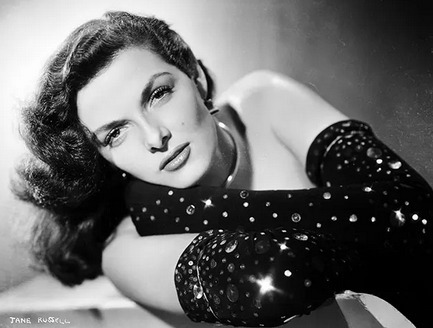
Maybe it's tempting to think of her as Marylin's second banana, but honestly? I think she's the one with a little more Zhush.
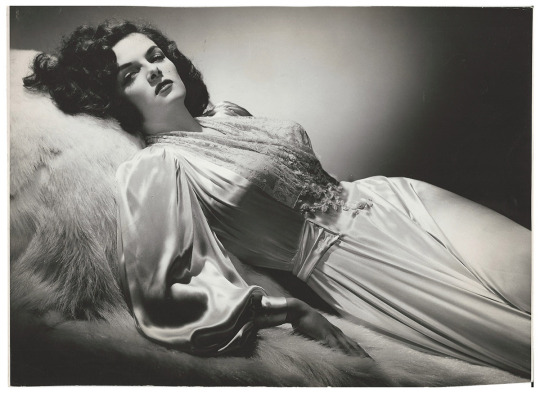
Did someone say sexual magnetism
I assume she's been submitted already, I just want the propaganda to include the empirically confirmed fact that images of her in The Outlaw have the power to rewire teenage girl brains. It's true I was there I lived it
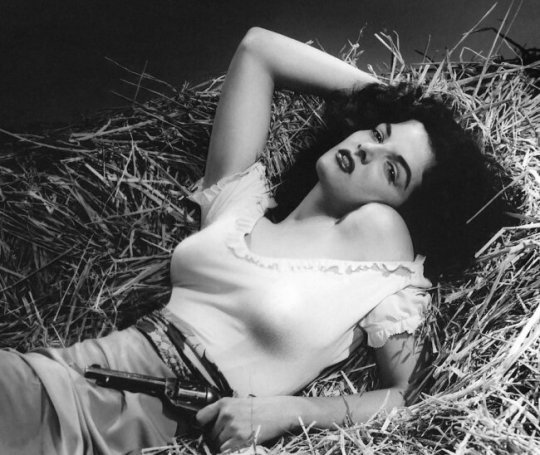
im love her your honor
God what a tiger. Those eyes were truly magnetic.

She literally got a major motion picture delayed for two years for being too va va voom in it

Savitri:
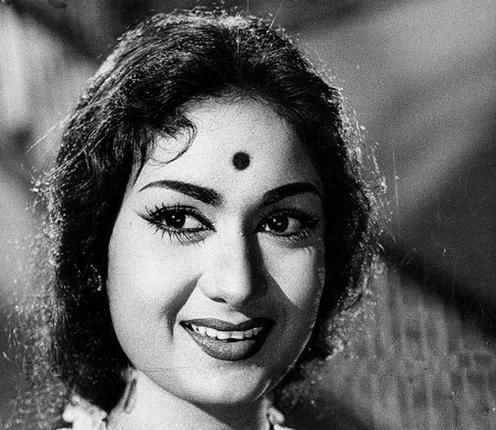

363 notes
·
View notes
Text
Aarthi Agarwal Indian-American Actress Wallpapers

Aarthi Agarwal (March 5, 1984 — June 6, 2015) was an American actress known for her work in Telugu cinema (Tollywood). She passed away on June 6, 2015, at the age of 31 at Atlantic Care Regional Medical Center in Atlantic City, New Jersey. Aarthi had been dealing with obesity and underwent surgery six weeks before her death. According to her manager, she died due to a heart attack. At the time of her death, she was living with her parents in Egg Harbor Township.
Early Life Aarthi was born on March 5, 1984, in New Jersey, USA, to a family originally from Gujarat, India. Her father, Shashank, worked in the hotel industry, and her mother, Veema, was a housewife. She had two siblings, including her younger sister, Aditi Agarwal, who also acted in movies.
Acting Career Aarthi began acting at a young age. At 16, she made her debut in the Bollywood movie “Paagalpan.” Later, she became popular in Telugu cinema, even though she didn’t speak Telugu. Her notable films include “Indra” (2002), “Nuvvu Leka Nenu Lenu,” and “Allari Ramudu.” She won several awards for her performances.
Personal Struggles and Challenges Aarthi faced personal difficulties throughout her life. In 2005, she attempted suicide due to rumors about her relationship with a co-star. In 2006, she was hospitalized after suffering head injuries from a fall. In 2007, she married a software engineer named Tasval Kumar, but they divorced in 2009. After that, she lived in New Jersey with her parents and struggled with health issues, including weight problems. She returned to acting in 2014.
Untimely Death Sadly, Aarthi passed away on June 6, 2015, after suffering a heart attack. She had undergone liposuction surgery six weeks before her death and had experienced breathing problems afterward.
Notable Films Some of Aarthi’s well-known movies include “Nuvvu Leka Nenu Lenu,” “Indra,” and “Andala Ramudu.” She continued acting until her final film, “Aame Evaru?” was released posthumously in 2016.
Though her life was short, Aarthi Agarwal Indian-American Actress Wallpapers left a lasting impact on the Telugu film industry. Her beauty, talent, and determination are still remembered by her fans.
Profile:
Full Name: Aarthi Agarwal
Date of Birth: March 5, 1984
Date of Death: June 6, 2015
Occupation: Actress, Model
Spouse: Tasval Kumar (2007–2009)
Relatives: Aditi Agarwal (sister)
Notable Films: “Nuvvu Leka Nenu Lenu,” “Indra,” “Andala Ramudu”
Cause of Death: Heart Attack
Aarthi’s fans can find her pictures and wallpapers online to celebrate her legacy and memory. Her presence in the Telugu film industry and her unforgettable performances continue to be cherished.
2 notes
·
View notes
Text
TAG 9 PEOPLE YOU WANT TO GET TO KNOW BETTER
Got tagged by the ever effervescent @waitmyturtles (on this post linked here). Thanks dearie! 💖
THREE SHIPS 🔹 It wasn't intentional but mine are the same as @waitmyturtles–
Pat and Pran
Kurosawa and Adachi
Togawa and Nozue.
FIRST SHIP 🔹 The legendary MaxTul.
LAST SONG 🔹 I can't just put one down here; my taste is eclectic and random, and just the last song will paint the wrong picture.
A selection paints a fuller picture (but it's still curious): Clean Bandit and Zara Larsson's "Symphony" (because it was playing in the gym, and the music video is a masterpiece of an LGBT short film that brings me to tears every time – do watch if you haven't yet. It's beautiful). Also Miley Cyrus' "Flowers", the MSP boys' "You've Got Ma Back" and Tilly Birds' "Just Being Friendly." Gonna mention Dolly Parton's "9 to 5" and Dusty Springfield's "Son of a Preacher Man" too because they both popped up on YouTube. And Adam Lambert's version of Bonnie Tyler's "Holding Out for a Hero" because Tumblr decided to take a complaint about bots and set it to music (blogpost linked here).
LAST MOVIE 🔹 This one is way out of left field: Ponniyin Selvan Part 1 (the first Tamil movie I've watched in years, and it was SO GOOD). The book it's based on is also a classic. I'm not Tamil (or even of Indian ancestry) but the culture and language have a special place in my heart because of a childhood housekeeper/nanny who was more like family. Now thinking of watching RRR, but don't know if I will get around to it, because the energy in the clips seems a bit overwhelming. (Yes, I'm aware it's Telugu and not Tamil.) Prior to this – it was either Dune or Encanto (no hang on, maybe it was Everything Everywhere AAO; have been avoiding the cinema for a while since I couldn't get vaccinated earlier due to allergies and had to stay indoors quite a bit).
CURRENTLY READING 🔹 Don't hate on this – read the full explanation please – but with a tinge of guilt about the ethics of it all I'm re-reading a book about a certain boy wizard and his journey to self-actualization. Yes, I'm aware the author (whom I shall refrain from naming – like a Voldeuxmort) has in recent years fallen out of favor due to her views on trans issues, and is now a pariah among vast swathes of Tumblr, so please don't come at me, but I have my reasons.
When the books first came out I was fascinated by the world-building and concocted etymologies, but that's not the reason I'm re-reading. Thing is, I'm trying to learn another language (vastly different from the ones I do know) and the books are very useful for this. They have translations readily available in almost any language you could want, and I can cross-check any difficult bits with the English version, and I already know the story anyway. Plus there's lots of dialogue and the original author's style (or lack of it) isn't hugely literary – the prose is mostly functional, even pedestrian. And the plainness of the language helps when you're not ready (at learner level) for any leaps of linguistic trickery (except for the fantastical made-up bits, which you wouldn't need to learn anyway).
Also – and this is a big reason – my late mom loved these books, and they were the basis for a lot of shared memories for us. I remember watching the films with her and visiting the memorabilia stores too. They made her very happy, and this in turn made me happy. Mom also passed before any of the author's less savory views became public. So having them about reminds me of Mom a lot, back when things were simpler and without the current climate of nastiness.
So yes the books have become tarnished in my view, but the way I'm looking at it – these are books I already had even before the author's controversies broke to the surface, so it's not like I bought them recently and am indirectly supporting her here. I used to treasure these books for their imaginative content, rather less so now. There is still beauty in them, but they're also devalued in other ways. I'm not going to throw them out just yet (not right now anyway) – because for now they're also portkeys to happy memories and happier times.
I think of them like this – they're like the heirloom antiques passed down from generations before, but then you get them appraised and suddenly you find out they're not quite the precious artifacts you thought they were. But just because Mom's old clock or statue turned out to be a dud, it doesn't mean I can't use it as a doorstop or paperweight (or just another decorative tchotchke). You don't have to give it pride of place on the mantelpiece, but you can keep it for different uses that bring utility to your life in other ways. (And as always the other voice in my head is going "Yeaaah well, but that clock face has radium and the statue is flaking lead paint! You have a toxic doorstop that could kill the dog and that paperweight is also poisoning the worktable!" OK, valid points; just give me a little bit more time to figure this one out, please. 🤷♂️)
For now I'm using these books as functional learning aids, rather than throwing them out straightaway (it's better for the environment too, I tell myself). When my grief over Mom's passing fades (as it will, it must) maybe I can let them go of them then. 😥💖
CURRENTLY WATCHING 🔹 These shows:
Moonlight Chicken
My School President
Bad Buddy (always coming back to this one – but I watch my favorite bits on repeat, rather than going sequentially in full chrono)
The Amazing Race 34 (missed out on this when it first came out, so it's a binge watch now).
CURRENTLY CONSUMING 🔹 Gluten-free fruitcake – I have one in the fridge being quickly depleted and two others stashed in the freezer awaiting their turn; a dear friend and relation is a great baker, and when we recently got together after a years-long break (kept apart by the pandemic), he gave me several of these delicious beauties because he knows how much I love them and covet quality baked goods that are also GF (not always easy to find). SO GOOD with hot coffee and Thai BL. Also munching on the odd slice of gourmet bak kwa from a secret source, plus arrowhead chips.
CURRENTLY CRAVING 🔹 Chicken rice because of Moonlight Chicken.
ONWARD TAGS 🔹 Would like to get to know you more: @miscellar, @colourme-feral, @theheightofdishonor, @airenyah, @crzshaly437, @dribs-and-drabbles, @gennianydots, @faillen, @bengiyo. Ah and @respectthepetty too! Oops, I've gone past nine. 🤷♂️🤦♂️
As always, no obligation to play! But fun if you do. 🥰
20 notes
·
View notes
Text
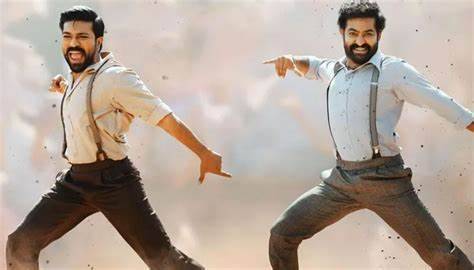
RRR at Oscars 2023: Why India's Naatu Naatu song wowed the jury
A track from Telugu blockbuster RRR, short for Rise Thunder Revolt, Naatu was the main Indian film melody to be selected for an Oscar.
Its artists likewise performed at the Foundation Grants, which are being broadcasted in India on Monday morning.
The tune turned into a worldwide sensation - moving perpetual Instagram reels and dance patterns via web-based entertainment - after the film's delivery in US last year, where its fast rhythm and synchronized movement were a moment hit with the crowds.
Created by MM Keeravani with verses wrote by Chandrabose, Naatu previously left a mark on the world once in January when it won the Brilliant Globe for best unique tune, overcoming competitors like Rihanna, Taylor Quick and Woman Crazy. That very month, the melody additionally won the Pundits Decision grant for the best tune.
"It's not a result of the music or the dance - the whole story of RRR can be summed up inside these 10 minutes of Naatu," the movie's chief, SS Rajamouli, told Vanity Fair.
A verifiable dream, highlighting hotshots Slam Charan and Jr NTR in lead jobs, RRR recounts the imaginary story of two progressives who battle contrary to English rule in India.
Rajamouli says he imagined Naatu as a "battle scene" in which two political dissidents push an English official to the brink of collapse - through dance.
"The melody is a story inside the bigger story of the film," the producer said.
Back in 2020, when RRR was still under creation, all Rajamouli told Keeravani was that he wanted a tune that would feature the moving ability of his legends.
Keeravani then, at that point, went to his number one lyricist Chandrabose and said: "Compose anything you like. In any case, this story happens during the 1920s, so use words proper to the time."
With no song or tune to work with, Chandrabose previously concocted the snare line of "Naatu" and that signifies "Dance, Dance" in Telugu.
He let BBC Telugu know that he composed an uptempo tune with a quick beat, which he realized Keeravani leaned toward. The beat is generally utilized in society tunes of the two Telugu-talking provinces of India - Andhra Pradesh and Telangana.
Attracting motivation from his experience growing up Telangana, Chandrabose incorporated a few folksy references - like eating bean stew with jowar roti (red sorghum bread) - in the tune.
Most of the melody was finished in two days, Chandrabose said. Yet, it required 19 months for the leftover piece to meet up.
Rajamouli and Keeravani credit a lot of Naatu's prosperity to the melody's choreographer, Prem Rakshit, who made around 95 dance ventures for the track.
"Every one of them [the actors] have their own style," Rajamouli said in a prior interview. "So he needed to find something that fit the two of them."
Rakshit said he made 30 forms of the mark step in which NTR Jr and Smash Charan hit the dance floor with their arms around one another. The wonderful arrangement must be additionally made do after Charan asked the chief "in the event that they could follow through with something" with the ensemble.
The melody comes full circle in a long distance race dance-off as every one of the artists kick up a tempest, gradually imploding individually in depletion until just the legends stay standing.
Slam Charan and NTR Jr then go to take on one another and a dance rivalry between the two legends follows. Rajamouli said he attempted to set out the film's subjects of fellowship, contention and fortitude through the grouping.
Also, the rest is history.
Since the film's delivery last year, fans have been attempting to duplicate the unpredictable foot turns and infectious dance moves. At film screenings in Los Angeles, crowds were much of the time seen racing to the stage to move when the tune played.
Despite the fact that the track was shot before the Mariinskyi Castle, a beautiful ocean blue design in Ukraine, Rajamouli said his point was to reproduce the environment of an Indian town. In past meetings, the chief has admitted that individuals referred to him as "insane" for shooting in a country very nearly war.
The group shot the tune north of 15 days, working 12 hours every day with 150 artists and a team of 200 individuals.
Rakshit said that each time he approved a take, Rajamouli would request "one more" shot.
"He went outline by casing to ensure we were in a state of harmony," Charan said in a meeting.
12 notes
·
View notes
Text
A track from the Telugu blockbuster RRR, Short for Rise Roar Revolt, Naatu Naatu was the first Indian film song to be nominated for an Oscar. Now ‘RRR’ creates history, ‘Naatu Naatu’ wins Best Original Song. With this win, ‘RRR’ has become the first Indian feature production to win an Oscar.
2 notes
·
View notes
Text
Ek Shaqs ki Galaati ki Wajese Purre Tollywood ko CM ke Saamneh JHUKNAH Padhgaya
Noted Tollywood Personality, Producer & Director Tammareddy Bharadwaj has come out strong against Allu Arjun
Due to one person E G O the entire Telugu Film Industry, has to bow down before the CM Revanth Reddy
May be its unfortunate, but mistake has been done, unknowingly he is accused & but knowingly lies to cover his mistake
https://www.facebook.com/share/v/1KgZNimWET/?mibextid=oFDknk
https://www.instagram.com/reel/DEGL8ratFUZ/?igsh=YXN2ZmpqbXc2d3po
https://youtube.com/shorts/n7I-_8h0e4M?si=rKCWX9iM2j6iicn3
0 notes
Text
[ad_1] Allu Arjun’s Pushpa 2: The Rule was released on December 5 and became the biggest opener of 2024. The actioner was a big heap before the release and still continues to sweep across the country. Recently, Bhool Bhulaiyaa 3 actor Kartik Aaryan joined the craze with a new rugged look while channelling his inner fan moment with Allu Arjun's iconic character resemblance.Is Kartik Aaryan’s rugged look inspired by Pushpa 2?On Wednesday, Kartik Aaryan was spotted outside a theatre in Mumbai after watching Pushpa 2: The Rule. Engaging playfully with the paparazzi, the Chandu Champion actor hinted that his new style took inspiration from Allu Arjun's character, Pushpa Raj, in Sukumar's popular Telugu action thriller series. In a viral video, Kartik appears in a casual outfit, sporting a grey sweatshirt, blue jeans, sneakers, and a cap. During the photo session, when the photographers praised his look, he responded by mimicking Pushpa’s iconic “Jhukega nahi” gesture, revealing the source of his style inspiration.Pushpa 2: The Rule craze not only in Bollywood but also in the Indian cricket industryA few days ago, an Indian cricketer shared a short video on his Instagram stories featuring his friends. In the video, Singh is seen performing Allu Arjun's iconic hand gesture at a gym. Several celebrities have praised the movie, and Punjabi star Diljit Dosanjh referenced Pushpa 2: The Rule during his Chandigarh show, reciting its popular dialogue. The film received an exceptional response on its first day of release. Pushpa 2 maintained this momentum throughout its first week, earning approximately ₹1,000 crore within seven days. [ad_2] Source link
0 notes
Text
[ad_1] Allu Arjun’s Pushpa 2: The Rule was released on December 5 and became the biggest opener of 2024. The actioner was a big heap before the release and still continues to sweep across the country. Recently, Bhool Bhulaiyaa 3 actor Kartik Aaryan joined the craze with a new rugged look while channelling his inner fan moment with Allu Arjun's iconic character resemblance.Is Kartik Aaryan’s rugged look inspired by Pushpa 2?On Wednesday, Kartik Aaryan was spotted outside a theatre in Mumbai after watching Pushpa 2: The Rule. Engaging playfully with the paparazzi, the Chandu Champion actor hinted that his new style took inspiration from Allu Arjun's character, Pushpa Raj, in Sukumar's popular Telugu action thriller series. In a viral video, Kartik appears in a casual outfit, sporting a grey sweatshirt, blue jeans, sneakers, and a cap. During the photo session, when the photographers praised his look, he responded by mimicking Pushpa’s iconic “Jhukega nahi” gesture, revealing the source of his style inspiration.Pushpa 2: The Rule craze not only in Bollywood but also in the Indian cricket industryA few days ago, an Indian cricketer shared a short video on his Instagram stories featuring his friends. In the video, Singh is seen performing Allu Arjun's iconic hand gesture at a gym. Several celebrities have praised the movie, and Punjabi star Diljit Dosanjh referenced Pushpa 2: The Rule during his Chandigarh show, reciting its popular dialogue. The film received an exceptional response on its first day of release. Pushpa 2 maintained this momentum throughout its first week, earning approximately ₹1,000 crore within seven days. [ad_2] Source link
0 notes
Text
Price: [price_with_discount] (as of [price_update_date] - Details) [ad_1] SYNOPSISFollowing the events of Avengers: Endgame, Peter Parker (TOM HOLLAND) returns in Spider-Man: Far From Home. Our friendly neighborhood Super Hero decides to join his best friends Ned, MJ, and the rest of the gang on a European vacation. However, Peter’s plan to leave super heroics behind for a few weeks is quickly scrapped when he begrudgingly agrees to help Nick Fury (SAMUEL L. JACKSON) uncover the mystery of several elemental creature attacks. Spider-Man and Mysterio (JAKE GYLLENHAAL) join forces to fight the havoc unleashed across the continent, but all is not as it seems.OVER 90 MINUTES OF SPECIAL FEATURES:? PETER'S TO-DO LIST - A SHORT FILM? GAG REEL & OUTTAKES? DELETED & ALTERNATTE SCENES BETTY BLIPS? SUIT UP? THE JUMP OFF? STEPPING UP? TEACHERS' TRAVEL TIPS? NOW YOU SEE ME? FAR, FAR, FAR FROM HOME? IT TAKES TWO? FURY & HILL? THE GINTER-RIVA EFFECT? THANK YOU, MRS. PARKER? STEALTHY EASTER EGGS? THE BROTHERS TRUST? AND MUCH MORE!BONUS DISC - WORLD WIDE WEB-SLINGER? AN IN-DEPTH LOOK AT SPIDER-MAN’S WEB-SLINGING ADVENTURE AROUND THE WORLD FEATURING NEW INTERVIEWS AND BEHIND-THE-SCENE WITH THE CAST AND CREWMAIN AUDIO LANGUAGES3D BLU-RAY? DTS-HD Master Audio: English 5.1? Dolby Digital: Hindi 5.1, Tamil 5.1, Telugu 5.1 & Thai 5.12D BLU-RAY? DTS-HD Master Audio: English 5.1.? Dolby Digital: Hindi 5.1, Tamil 5.1, Telugu 5.1 & Portuguese (Brazil) 5.1.GENRE:? Action, Adventure, Science FictionVIDEO ENCODING? ALL REGION Aspect Ratio : 2.39:1 Is Discontinued By Manufacturer : No Language : English Product Dimensions : 20 x 14 x 3 cm; 350 g Item part number : S4U00109-MIG Media Format : 4K, Blu-ray, Multi Pack, Limited Collector's Edition Run time : 2 hours and 9 minutes Actors : Tom Holland, Samuel L. Jackson, Jake Gyllenhaal, Marisa Tomei, Jon Favreau, Zendaya, Jacob Batalon Dubbed: : Hindi, Telugu, Tamil Subtitles: : English Studio : Sony Pictures | Excel Home Videos Producers : Victoria Alonso, Avi Arad, Chris Buongiorno ASIN : B07XZCX2NF Country of Origin
: Austria Number of discs : 4 Manufacturer : Sony Pictures | Excel Home Videos Packer : Excel Productions Audio Visuals Pvt Ltd Importer : Excel Productions Audio Visuals Pvt Ltd Item Weight : 350 g Item Dimensions LxWxH : 20 x 14 x 3 Centimeters Net Quantity : 1.00 count Generic Name : Movie Disc [ad_2]
0 notes
Text
Tribute 849.
Tribute to Versatile Director Sudha Kongara 849 Today, I am going to pen a tribute to a versatile director who has made a remarkable impact in a short span of time—none other than Director Sudha Kongara. After completing her education at Women's Christian College, she worked alongside stalwart directors like Mani Ratnam and Bala for several years, which helped shape her craft. Later, she ventured into independent direction, which is truly commendable. With nearly 18 years in the film industry, Sudha Kongara has established herself as a prominent director in Tamil, Telugu, Hindi, and English cinema. One of her most notable works was the biopic of former Captain Gopinath, inspired by his experiences with Air Deccan, which she brilliantly brought to life in her recent film Soorarai Pottru, starring Suriya. This film not only received critical acclaim but also became a significant achievement in her career. Sudha Kongara has worked with some of the biggest stars and technicians across Tamil, Telugu, and Hindi cinema. Her talent is further evidenced by her winning the Filmfare Award for her Tamil film Irudhi Suttru, starring Madhavan. I have had the privilege of watching two of her films: Irudhi Suttru and Soorarai Pottru. Both films showcase her mastery of technical aspects, especially the cinematography by Siva Kumar Vijayan and Nikith Bommi Reddy, which were exceptional. Soorarai Pottru carried a powerful message that air travel should be accessible to all, and the performances from the cast were remarkable. The film beautifully showcased a blend of actors from various languages, including Paresh Rawal (Hindi), Abirhami (Malayalam), Prakash Belawadi (Kannada), and, of course, the dashing Suriya, alongside the versatile Urvashi, Karunas, and others, making Soorarai Pottru a soaring success. Today, I am proud to pay tribute to this talented director. The film industry has many women directors who have proved their exceptional talents, and Sudha Kongara is certainly one of them. K. Ragavan 23-12-24 Until We Meet Again Next Week,
0 notes